PPC
13 Brilliant Restaurant Website Designs to Copy in 2023

Last weekend, I was on the road and starving after a morning of errands. I pulled out my phone and after rooting through a mess of confusing navigation, out-of-date PDF menus, and questionable hours of operation, I ended up heading home to settle for a sad bowl of cereal. I blame all-too-common terrible restaurant website design, and I’m not the only one who has been deterred from patronage by bad website design.
In fact, 68% of diners are discouraged from visiting a restaurant due to a bad website.
That’s why I’m cataloging some of the best restaurant website design examples you can use for inspiration, whether you’re overhauling your site, updating your brand, or launching your own place.
Before we get to the examples, though, let’s take a closer look at why you need to care about your restaurant website design—not just to avoid ruining my weekend morning, but to grow your business.
Why do you need to care about restaurant website design?
You’ve already read the stat in the intro, but here are some more:
- 77% of consumers will visit a restaurant’s website before dining in or taking out food.
- When placing an online order, a patron is more likely to use a restaurant’s website than a third-party site like Grubhub.
- Even if you have a functional website, 30% of diners are turned off by an outdated look.
So while your menu, social media profiles, and listings are important for restaurant marketing, an appealing, effective website is essential for sales and revenue.
And the importance of a solid digital presence is only going to become more important. It’s no surprise that younger generations have stronger preferences for online interactions, including website FAQs over phone calls, ordering through a website or app instead of over the phone, and more.
In fact, Statista found that more than 50% of people 18-29 years old ordered food online during April 2020 and almost 40% of people 30-49 years old.
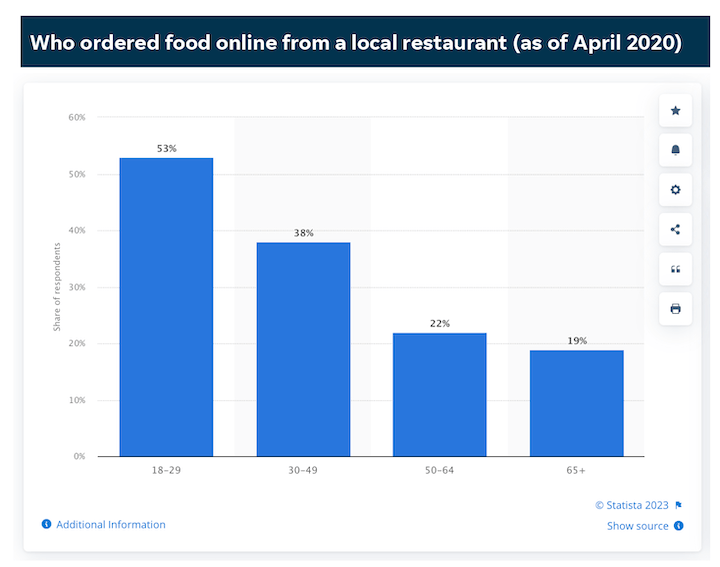
13 delicious restaurant website design examples
The most effective website design will depend on the style of your restaurant. Is it formal or casual? An intimate dinner spot or a must-see brewery? A food truck or a local chain? You want to communicate your spot’s personality to your customers so that they know exactly what to expect, so all of these factors will impact your website design. But there are some standard elements. that you’ll want to include regardless.
So we’ve rounded up 13 restaurant website design examples of these essentials, including great branding, intuitive navigation, and so much more. Take a look.
1. Mida
Mida is an Italian restaurant in Boston’s South End with amazing pasta dishes, a great wine list, and an ambiance that is, quite simply, cool. The website design matches this perfectly.
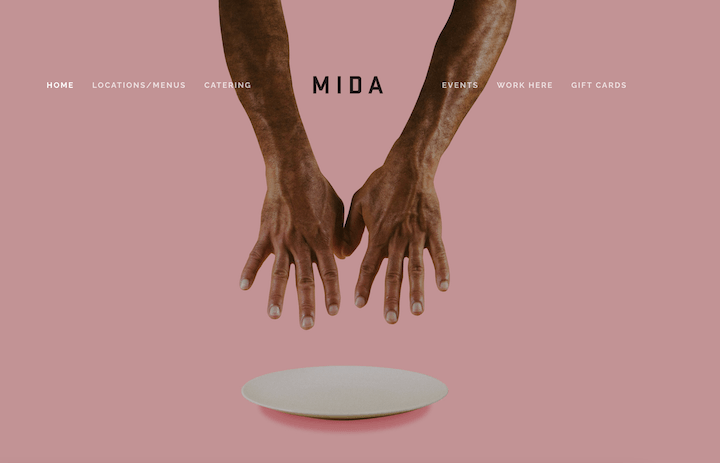
The shadowy Millennial pink background, the sleek sans serif font, the intriguing photograph. The effect is cool and clickable, which is ideal for a restaurant looking to get reservations and online orders.
2. Bennett’s
In case you’re thinking appealing brand design is just for cool or upscale restaurants, let’s look at Bennett’s. This sandwich shop is located in Kennebunk, Maine, with additional locations in New Hampshire, Maine, and Boston.
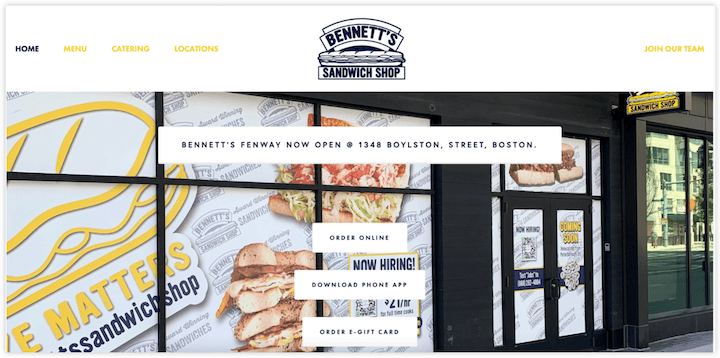
The line-drawn sandwich feels nostalgic, but the logo font is nice and modern. The black-and-white is also a sharp backdrop for the sandwich photos, and the fun, bright yellow accent. Plus, this works well for a sandwich place with a beach-town origin.
3. Shake Shack
Shake Shack is a large fast-food chain with a young, modern feel. Its website color scheme is similar to Bennett’s: black and white with a bright, featured green.
Shake Shack’s website also features its menu—which most searchers are looking for—right on its home page.
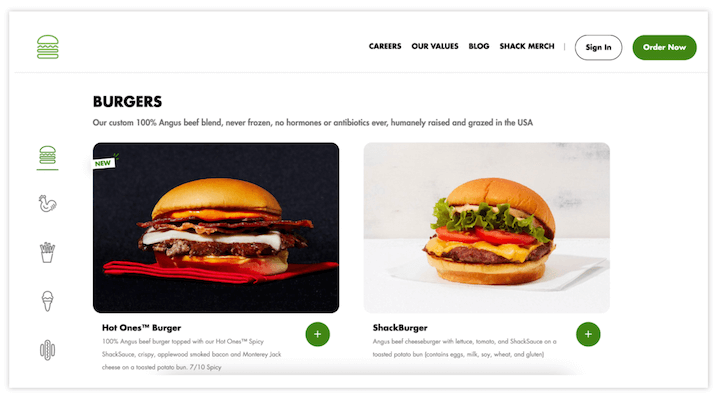
The photos are detailed and show everything on the burgers and sandwiches, and right underneath each item has a full description, including all allergen information. This is great, but it isn’t just for large chains or franchises. Including this info is key for serving a ton of people effectively and safely, so make it easy for everyone with food restrictions to figure out which items on your menu work for them.
4. Union Square Donuts
One non-negotiable design element for your restaurant website (real estate websites too!): photos. 45% of restaurant patrons say they specifically look for food photos on restaurant websites, and 36% say disappointing food photography discourages them from visiting a restaurant.
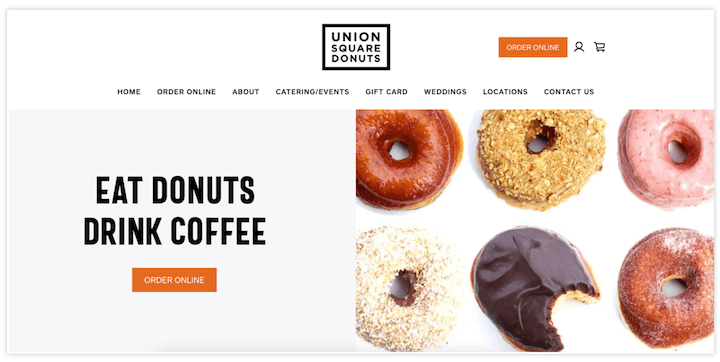
These don’t need to be super fancy or staged, but the food needs to look amazing. Here’s how Union Square Donuts does it.
Delicious, donut-y perfection.
5. Founding Farmers
Founding Farmers is a Mid-Atlantic chain of farm-to-table restaurants that originated in D.C., hence the adorably punny name. The restaurants feature fresh food with locally sourced ingredients and a focus on brunch. Even more, Founding Farmers is majority farmer-owned, sustainably operated, and intent on giving back to its communities.
This human-first focus is front-and-center in the hero section video.
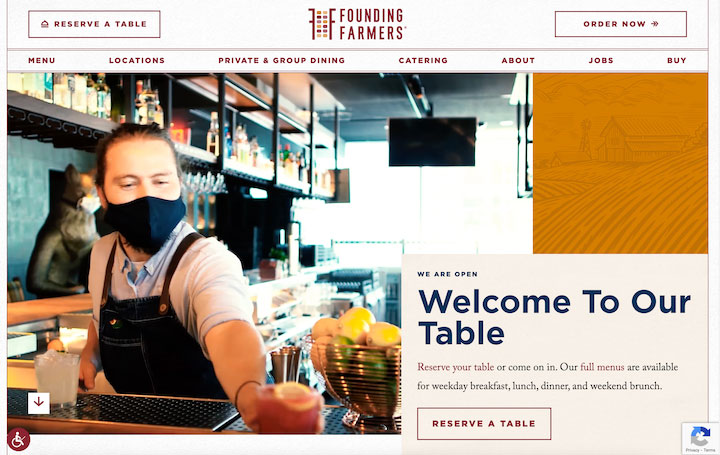
The video frames the experience from start to finish with people—a diner walking in the door, prep chefs cooking and plating, and a server going above and beyond with a takeout order. An excellent way to communicate to potential patrons the feel-good center of this local chain.
6. The Lost Kitchen
The Lost Kitchen is a small, boutique restaurant opened by Erin French that exploded in the last few years. It’s way more than just the restaurant now—it’s a BnB, a small goods store, cookbooks, and even a TV show. The website communicates this well, without losing sight of the brand.
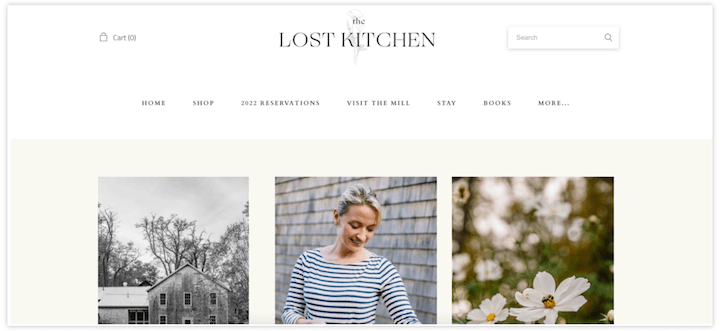
The soft off-white backgrounds and deep gray fonts. The simple design. And notice the muted bucolic photos flanking the brighter, more colorful shot of Erin French. This keeps the heart of the restaurant, now the brand, at the center.
7. Giusto
Your restaurant doesn’t need to have a celebrity chef or a TV show to be able to feature your unique selling points. Maybe it’s a specific one-of-a-kind dish, maybe it’s the location, maybe it’s the family tradition. Whatever makes your place special needs to be highlighted on your website.
Giusto does this really well. The restaurant has a small indoor section and a large, open-air bar and bar seating on a deck overlooking Newport, Rhode Island’s harbor. This photo is, of course, on its homepage.
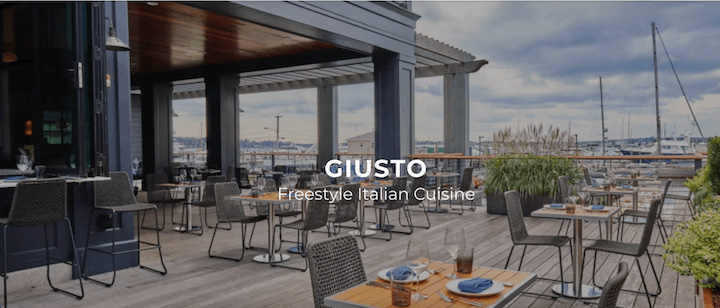
8. Pizzeria Beddia
Having a completely unique history, location, or focus is great (especially for your about us page). But sometimes what makes your restaurant special can be more common: farm-fresh food, a local connection, a slow, handmade specialty.
This still deserves top billing in any restaurant website design.
Here’s an example. Pizzeria Beddia, located in Philadelphia, showcases its handmade pizza and the process right on the homepage.
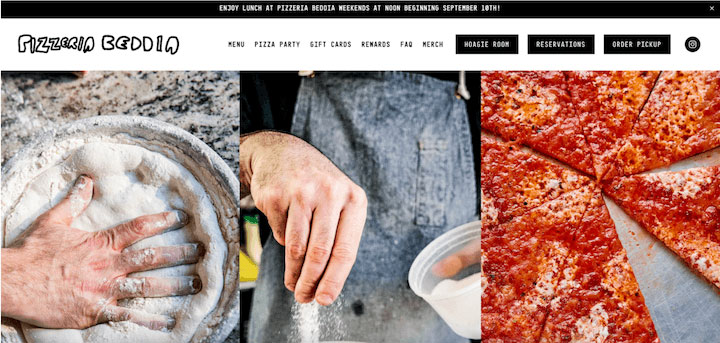
It looks delicious. Bonus points for the banner advertising the schedule change, too.
9. Rebel Rebel
If your restaurant has been featured in the press or received any awards, this should go on your website. Depending on your brand, this could be a photo, a link, or a badge on your homepage.
Rebel Rebel is a natural wine bar in Somerville, Massachusetts that manages to share its achievements prominently without breaking out of its hipster-y personality.
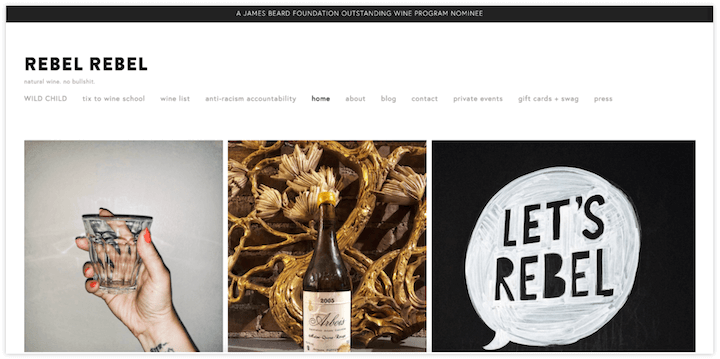
Rebel Rebel celebrates its James Beard award with a simple banner—letting everyone know, but not gushing or getting uncool.
10. Condesa
Whenever I’m visiting a restaurant website (or any website, for that matter), I’m looking for something. A menu, hours, social links, a reservation. That’s why you need to prioritize easy navigation on your own site.
I love how Condesa, a Mexican restaurant in Philadelphia, accomplishes this without the design looking utilitarian or boring.
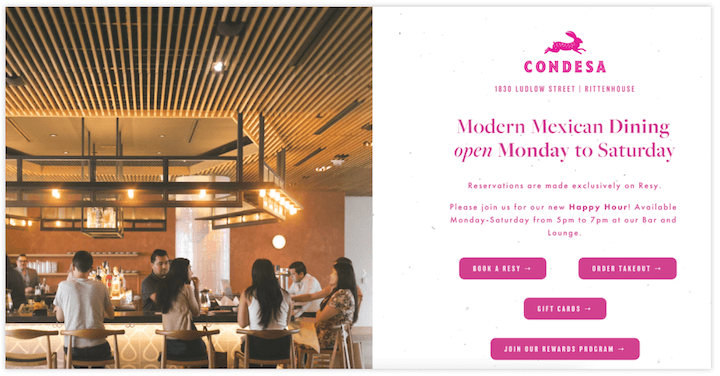
The left revolves through a gallery of restaurant photos, and the bold pink on the right has all of the information you need, including a CTA to book a reservation and another to order takeout. Nice and easy.
11. Rose Foods
Rose Foods also uses bright colors to show off its brand personality. Located in Portland, Maine, this restaurant described itself across the internet as a house-made bagel shop featuring sandwiches and classic Jewish deli fare.
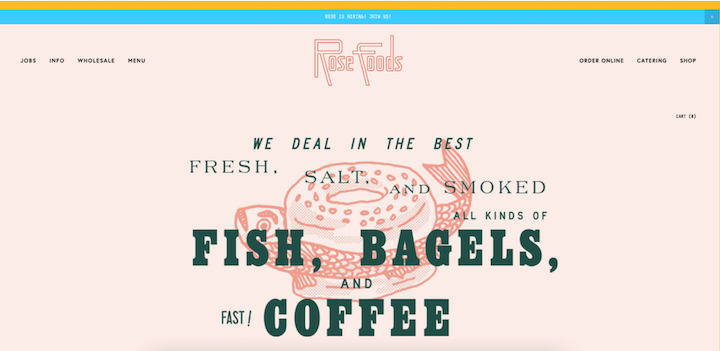
Because the focus is on classics, Rose Foods leans into retro fonts and kitschy line drawings and includes just a few photos. The effect? Based on the small shop’s weekend waits and 20k Instagram followers, it works.
12. Uni
One of the reasons why a restaurant website is so important to get right is because it’s often your potential customer’s first interaction with your band. You want to include all of the basic information, as well as let them know what to expect when they visit you IRL.
Here’s a great example from Uni, an izakaya in Boston.
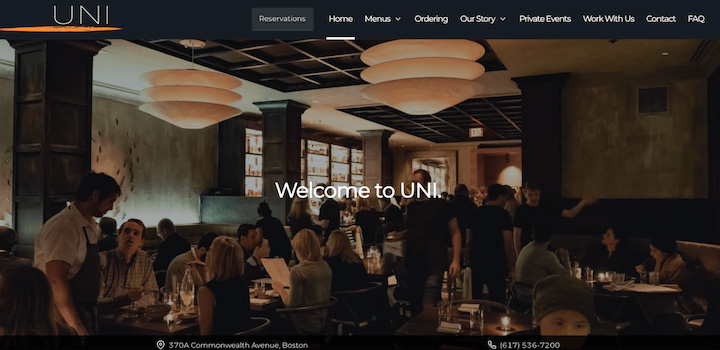
The feel of the website is sleek, dark, intimate, and crowded (in a cozy way). This is exactly what Uni feels like inside.
13. Girl & the Goat
Some restaurants have multiple locations that are nearly identical. But others have a few locations with distinct personalities. If that’s your restaurant, make sure to convey this on your website. Girl & the Goat does this well.
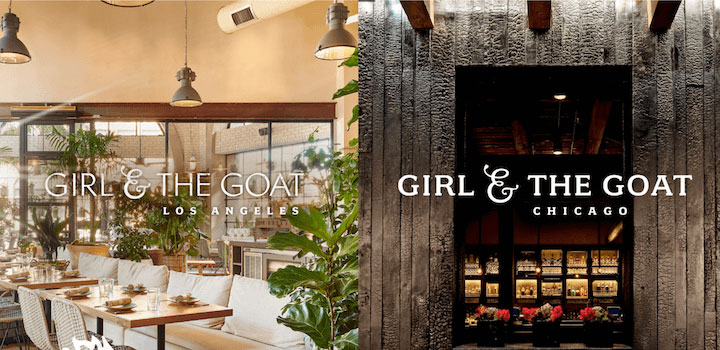
The interior of the Los Angeles location is light and airy with lots of natural sunlight and greenery. The Chicago location is darker and moodier with deep wood tones, black accents, and an ornate bar. The website features photos highlighting the appeal of each location’s ambiance, as well as the same delicious food.
Make sure your restaurant website design delivers
Your restaurant’s website is another element of your customer experience, so take advantage of that opportunity. You want to offer the same high-quality service, share the same information, invite the same ideal customers, and start forming that relationship right away.
The restaurant website design examples above offer tons of great ideas for inspiration, and a few repeat essentials. Here’s a quick run-down of the elements you should focus on to make sure your restaurant website as effective as possible:
- Clear location or locations
- Easy-to-access menu
- Appealing branding
- Contact information
- High-quality photos
- Reservation CTA
- Order online CTA
- Awards and press
PPC
97 Marvelous May Content Ideas for Blog Posts, Videos, & More

Author Fennel Hudson once wrote, “May, more than any other month of the year, wants us to feel most alive.”
You can imagine strolling through a field of newly bloomed wildflowers or feeling the breeze from your open windows on a road trip.
We’ve curated a collection of May content ideas for just about every channel—blogs, social posts, email, and video—designed to engage your audience during this special time of year.
Contents
💡 Want to plan the rest of your year in one place? Get the 2024 Marketing Calendar for ideas, tips, and trends for every month of the year.
May holiday content ideas
There’s lots to celebrate this month, from moms to Mexican culture. These May holiday content ideas will get you in front of your audience right when they’re ready to enjoy the big day.
Cinco de Mayo (May 5)
Officially, Cinco de Mayo commemorates Mexico’s military victory over France at the Battle of Puebla in 1862. Colloquially, it’s a day to appreciate Mexican culture.
Here’s a really cool content idea for this holiday: create a video with activities for kids showcasing Mexico’s traditional music, food, and history.
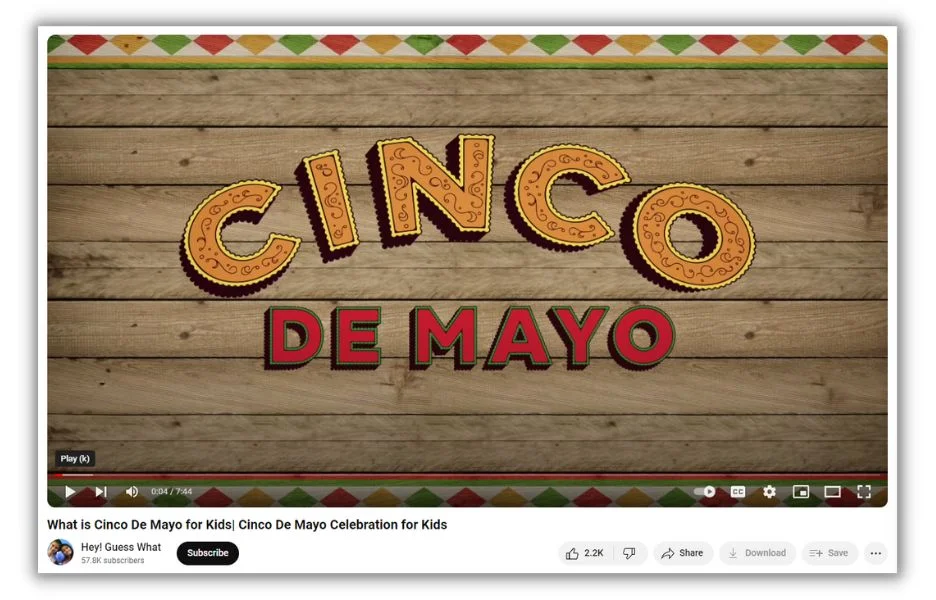
This is an ambitious project, for sure. You don’t have to go that big. There are several other ways you can fiesta on your feeds this Cinco de Mayo.
- Create a calendar of local Cinco de Mayo events.
- Write a blog post about traditional foods and links to recipes.
- Ask followers to comment with their favorite Mexican restaurants.
- Share a list of Mexican heritage centers and museums if there are some in your area, then tag their accounts in the post for extra reach.
- Post a video with examples of traditional Mexican music or images of traditional Mexican dress.
Mother’s Day (May 12)
Moms are the often-unsung heroes in our lives. We’d include the people who step up as stepmoms and mother figures to so many of us on that list.
For all they do, moms deserve a special day. You can help your customers give it to them by publishing a gift guide with ideas for every type of mom.
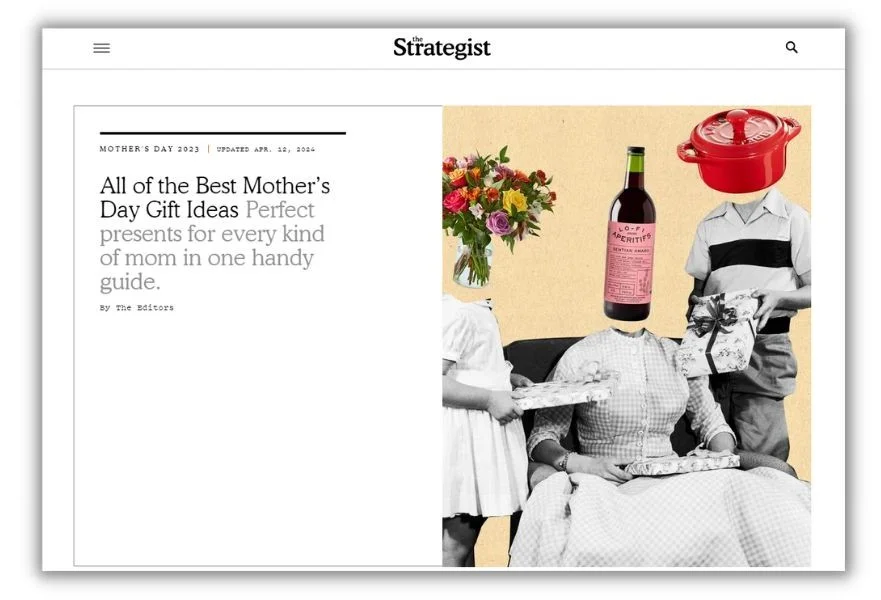

That’s just the tip of the ideation iceberg for Mother’s Day content. Try asking questions on social media or sharing favorite Mother’s Day memories.
- Ask people to share their favorite mom-ism (Like “because I said so”).
- Make some funny “A day in the life of a busy mom” videos.
- Write up a list of stores and restaurants offering Mother’s Day specials.
- Have moms comment on their favorite Mother’s Day ever.
- Show followers how to make the perfect breakfast in bed.
Here’s even more inspiration for your Mother’s Day social media posts.
🛑 Get a full year of social media posts in this Copy & Paste Social Media Calendar.
Memorial Day (May 27)
Memorial Day messaging has an interesting bifurcation. The meaning behind the day is a somber reminder of the military men and women who gave their lives in service of our country. At the same time, Memorial weekend is the unofficial start of summer, full of pool parties and barbeques.
If you want to address the first theme, an Instagram Reel highlighting the day’s history is a great choice.
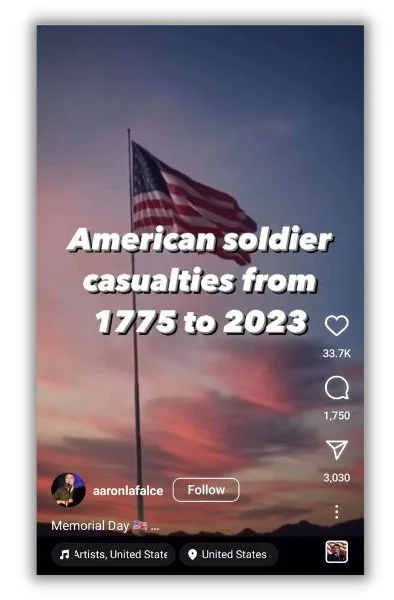

There are plenty of ways to engage your audience with the second theme. Promotions, party planning, and cooking tips are all popular options.
- Send your email subscribers a plan for the perfect Memorial Day party with lists of supplies, decoration ideas, and sample menus (use these Memorial Day subject lines).
- Simply share your Memorial Day hours in a social media post.
- Share a list of weekend road trip ideas, small towns to visit, historical sites to see, etc.
- Curate some refreshing summertime cocktail and mocktail recipes and publish them in a blog post.
- Run a Memorial Day promotion with discounts, BOGO offers, or free shipping.
Pop culture May content ideas
Pop culture social media posts are engagement gold (people love their fandoms!). May is full of days dedicated to popular books, movies, and more. Lean into those topics, and you’ll attract many people to your posts.
Harry Potter Day (May 2)
Harry Potter is an enduring cultural phenomenon, with fans flocking to themed conventions, parks, and events. Not to mention, #harrypotterday has nearly 38k posts on Instagram alone.
How can you engage this energetic audience of Hogwarts lovers? How about a funny video asking, “What if the world of Harry Potter existed in real life?”
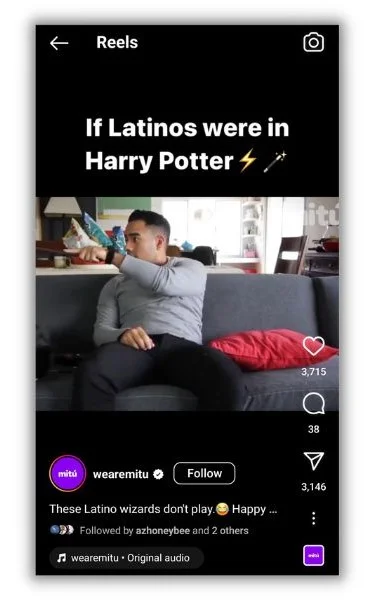

This is such a fun theme to explore. There are lots of visual and interactive content ideas you can use on Harry Potter Day.
- Run an Instagram poll asking followers which Hogwarts house they belong in (and connect each answer to one of your products).
- Ask followers to comment on their favorite HP books, movies, or scenes.
- Share Harry Potter little-known facts and behind-the-scenes stories.
- Hold a Harry Potter dress-up day for your staff or customers and share the photos on your social media feeds.
Star Wars Day (May 4)
“May the Fourth (be with you)” has become a yearly celebration of all things Sith, Skywalker, and space scoundrels. Like Harry Potter fans, Star Wars devotees will surely like, love, and share your Star Wars content.
The Dallas Mavericks played a little prank by stationing several Storm Troopers outside of a press conference. They looked like statues and startled players as they walked by.
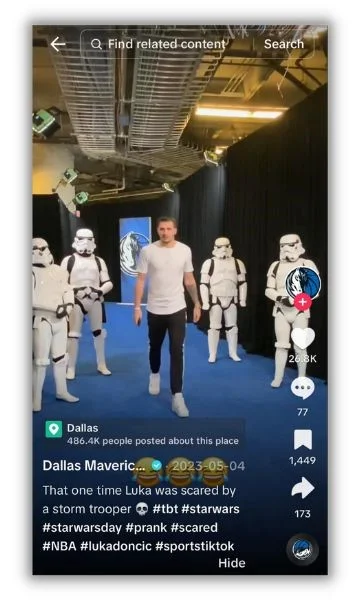

Costume events in various forms are great ideas for Star Wars Day, but there is a galaxy full of other ways to share the force.
- Hold a Star Wars trivia contest and Instagram giveaway, awarding prizes to the people who answer obscure questions the fastest.
- Ask followers to share pics of their pets dressed as Star Wars characters (here are more tips on gathering user-generated content).
- Create a how-to video with some Star Wars-themed crafts and activities
- Use the right hashtags like #maythefourth, #starwarsday, and #maythefourthbewithyou
Kentucky Derby (May 4)
Speaking of dressing up, May is also home to the most famous horse race of all time, the Kentucky Derby. And this event is all about seersucker suites and ornate headwear.
Anyone can join the fun, but if you work in the fashion, travel, or lifestyle industries, you should focus on Derby content.


Of course, party tips and mint julep recipes are great options, but don’t stop there. These content ideas will have your May marketing off and running.
- Work with an influencer to create a “Get ready with me” post that shows everything from make-up to hat choices to transportation for the big Derby party.
- Host an online watch party.
- Create a bingo card of typical things you’ll see during the Kentucky Derby.
- Ask people to pick the race winner and randomly choose one to win a prize.
More May pop cultural content ideas
This is just the beginning of the May content ideas you can create around pop-cultural events. Have fun with these themed days:
- Paranormal Day (May 3)
- National Space Day (May 3)
- National Golf Day (May 10)
- National Twilight Zone Day (May 11)
- National Limerick Day (May 12)
- National Classic Movie Day (May 16)
- National Talk Like Yoda Day (May 21)
- Sherlock Holmes Day (May 22)
Social awareness May content ideas
You have a platform and a mission. May is a great time to bring them together and show support for some of the several important causes highlighted this month.
Mental Health Awareness Month
Fortunately, people are having more open conversations about their mental health, but the stigma isn’t completely gone. Mental Health Awareness Month is about continuing those discussions and sharing education so everyone can thrive.
Save a few spots in your May content calendar to spread the message and promote good mental health.
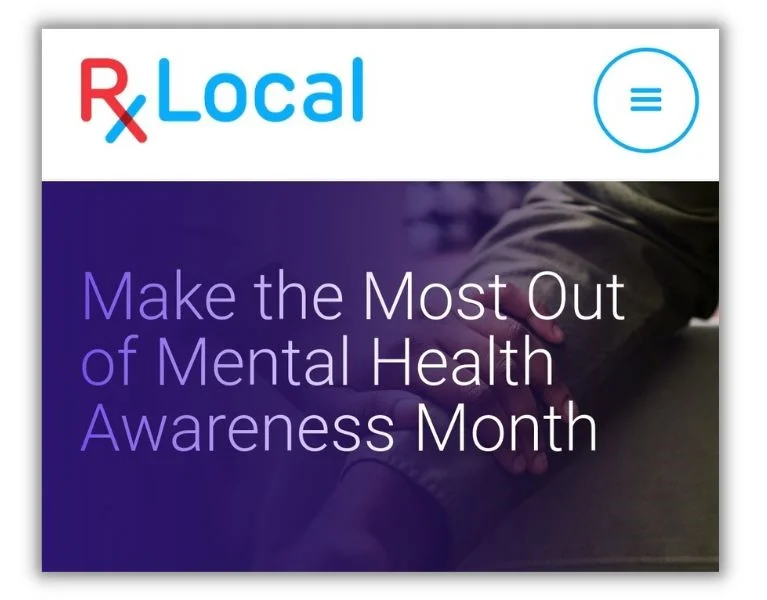

Education, empathy, and accessibility are important themes for Mental Health Awareness Month. Consider them as you share content that helps your audience understand what mental health means to them.
- Invite a mental health professional to manage your social media feeds for the day, offering tips on stress reduction, conflict resolution, and other common challenges.
- Share links and phone numbers to mental health resources and care providers.
- Create a music playlist of calming music.
- If you’re comfortable with it, share a personal story of your own mental health journey.
- Promote events like 5Ks and awareness walks that support mental health organizations and missions.
National Nurses Day (May 6)
Nursing is an incredibly demanding and critical profession. Some content devoted to appreciating amazing nurses is well warranted.
You don’t need an elaborate post or to work in the medical field to express your support for nurses.
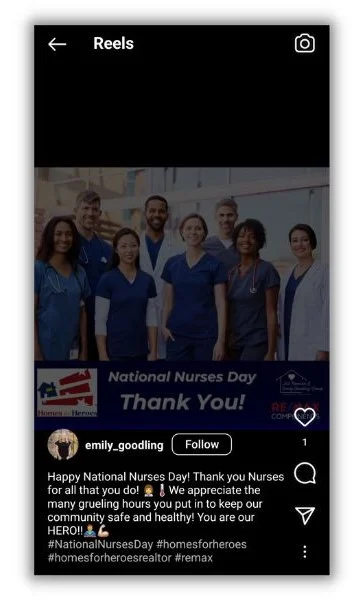

There are actually two nurse-related holidays in May: National Nurses Day (May 12) and International Nurses Day (May 13). You’ll need a few content ideas to fill out both days.
- List a few types of nurses and explain what those specialties do.
- Offer nurses an extra discount, or have a giveaway specifically for nurses.
- Create a list of the freebies and discounts offered to nurses by local or online shops.
- Share ways your followers can show support for the nurses in their lives.
National Rescue Dog Day (May 20)
“Adopt, don’t shop” is a common motto for dog rescues nationwide. The idea is that there is an overabundance of rescue pups available, and many are in less-than-ideal situations. Your May content can help connect these beautiful dogs with a new furever home.
I mean, look at that face!
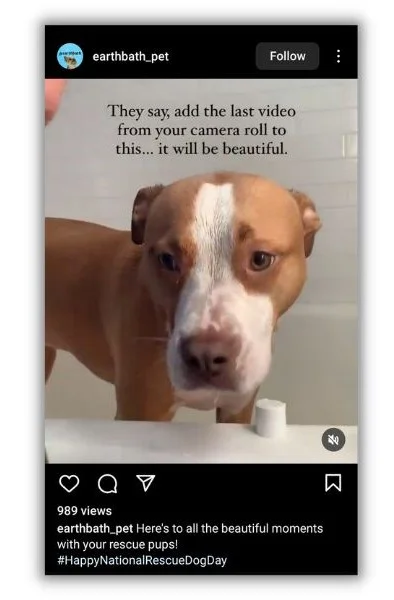

The great thing about content for this awareness day is that people love posts with pics of pets. So, use these ideas to do some good while gaining visibility for your brand.
- This day is ripe for user-generated content, so ask your followers to share images or videos of their rescue dogs.
- Partner with local rescue organizations to feature dogs that need a good home.
- Create a list of volunteer opportunities at dog shelters, or, even better, organize a volunteer day.
- Ask a dog trainer to give training tips for new rescue dogs to help your new followers feel more comfortable adopting a pup.
Other awareness May content ideas
Still not enough ideas for you? No worries, there are plenty more to go. Choose a few great causes from this list and use them to fill in the blanks.
- ALS Awareness Month
- Brain Cancer Awareness Month
- Cancer Research Month
- National Lyme Disease Awareness Month
- National Skilled Trades Day (May 1)
- National Public Radio Day (May 3)
- International Firefighters Day (May 4)
- National Teacher Appreciation Day (May 7)
- National Ovarian Cancer Day (May 8)
- World Red Cross and Red Crescent Day (May 8)
- National Small Business Day (May 10) (Small Business Week April 28 to May 4)
- National Hospital Day (May 12)
- International Day Against Homophobia, Transphobia, and Biphobia (May 17)
- Global Accessibility Awareness Day (May 18)
- World Multiple Sclerosis Day (May 20)
- World Hunger Day (May 28)
Food and drink May content ideas
Beverages and nibbles are always content crowdpleasers because, well, everyone eats and drinks. Get a few of these ideas in your content mix this May for an extra hit of attention.
National Give Someone a Cupcake Day (May 8)
Some say cupcakes are just muffins with better makeup, but we say they’re a confection worth commemorating. National Give Someone a Cupcake Day lets you honor this handheld sweet treat while sharing a little joy.
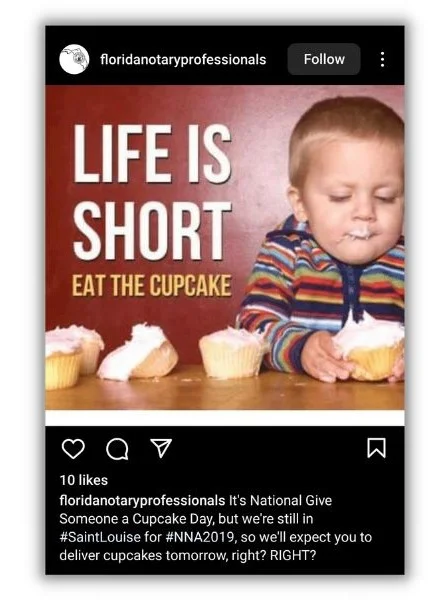

If you have a physical location, hand out a few dozen of the best cupcakes you can find and promote the event on social media. If you’re not a local business, there are still ways to spread the joy of a perfectly iced walking cake.
- Share the secrets of your staff’s favorite cupcake recipes or go-to bakeries.
- Ask followers to tag you in videos of them giving their family and friends cupcakes.
- Ask a baker to write healthier alternatives to some ingredients in typical cupcake recipes, like processed sugar and flour, and then share them in a post.
- Post a funny cupcake image and challenge people to suggest captions for it.
National Barbecue Day (May 16)
People are proud of their regional barbeque. Whether it’s Texas, Memphis, or the Carolinas, everyone knows their ‘que is the best and is willing to make fun of every other version.
Where there’s good-natured ribbing (pun intended), there’s lots of engagement on social media posts. Take advantage by posting about the “best” barbeque on May 16th.
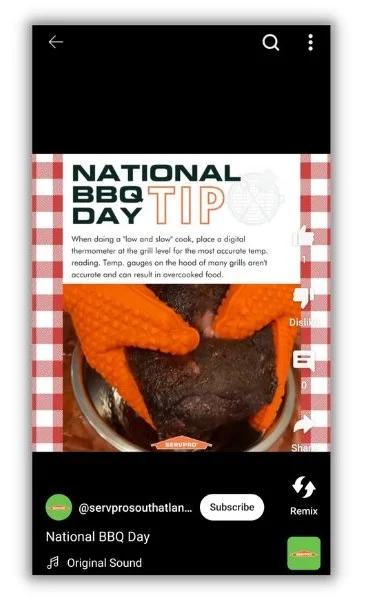

Here are a handful of ways to get the ‘que conversation started in your May content:
- Poll people about their favorite cooking method or sauce.
- Create an infographic of barbeque styles.
- Write a blog post detailing the best BBQ restaurants in your city.
- Share interesting facts about BBQ (like that the world record-holder ate over 13 pounds of ribs in 12 minutes).
Eat More Fruits and Vegetables Day (May 21)
It can’t all be roasted meat and icing. You have to include some produce, too. And that’s what Eat More Fruits and Vegetables Day is all about.
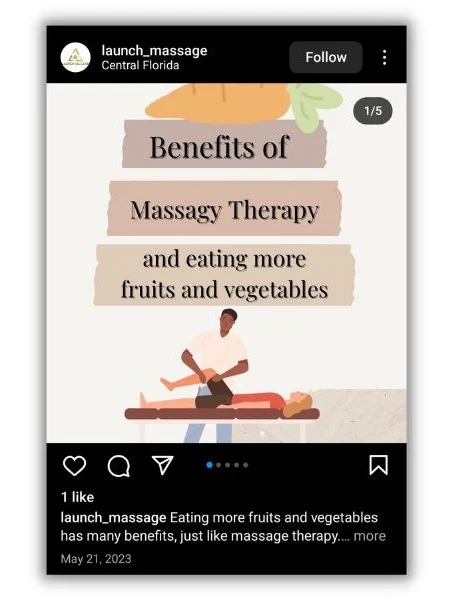

Although it may not be as fun as other food-related holidays, you can still create interesting, helpful content.
- Partner with other local businesses, such as gyms, massage therapists, nutritionists, and health food stores, to promote an online health fair.
- Create a chart listing the main health benefits of several fruits and vegetables.
- Promote local farms and farmers’ markets.
- Share a list of produce growing locally and when it’s in season.
- Work with a local restaurant to curate several easy, healthy recipes featuring in-season fruits and vegetables.
Other food and drink content ideas
Hardly a week goes by in May without several days dedicated to one food or another. You could even have a social media post listing them all. Or, pick a few from the list and create some mouth-watering content around it.
- American Cheese Month
- National Chocolate Parfait Day (May 1)
- National Truffle Day (May 2)
- National Coconut Cream Pie Day (May 8)
- International Hummus Day (May 13)
- National Chocolate Chip Day (May 15)
- National Mushroom Hunting Day (May 17)
- National Pizza Party Day (May 17)
- World Baking Day (May 19)
- National Wine Day (May 25)
Warm up your marketing channels with these May content ideas
There’s a palpable buzz in May that’s fueled by thoughts of outdoor gatherings, road trips, and days playing at the pool. When your May content matches that vibe, you’ll stand out in feeds, inboxes, and Google searches. And if you want all of your marketing efforts to generate more leads and sales, see how our marketing solutions can help any day of the year!
For more May marketing ideas, check out these posts:
PPC
How to Collect & Use Customer Data the Right (& Ethical) Way

Customer data is extremely valuable for many reasons, and one of the biggest is to make your marketing more effective. Customer data can act as the foundation for your marketing strategy, help you optimize and refine your campaigns, and influence the marketing messages you create.
But as privacy becomes even more important and customers pay more attention to how businesses are collecting, storing, and using their information, this is turning into a pretty big challenge for businesses—especially smaller, local businesses. So in this guide, we’ll cover everything you need to know about collecting and using customer data the right way to keep your marketing and targeting super effective.
Contents
What is customer data?
Customer data is any information about your customers or potential customers. It includes demographic information, contact information, and more (we’ll get into the types of customer data in a minute!).
It’s important to collect customer data so you can refine your campaign targeting, build segmented email lists, learn more about your audience, and more.
Before we dive into the types of customer data, let’s talk about the different sources of data:
- Zero-party data: Data customers give to businesses willingly.
- First-party data: Data businesses source directly from their customers.
- Second-party data: Data businesses have access to that they didn’t collect and don’t own. This data can come from a partner sharing data or insights.
- Third-party data: Data businesses use that have no ties to the business. This is typically collected from multiple sources and can be purchased by businesses for specific campaigns or research.
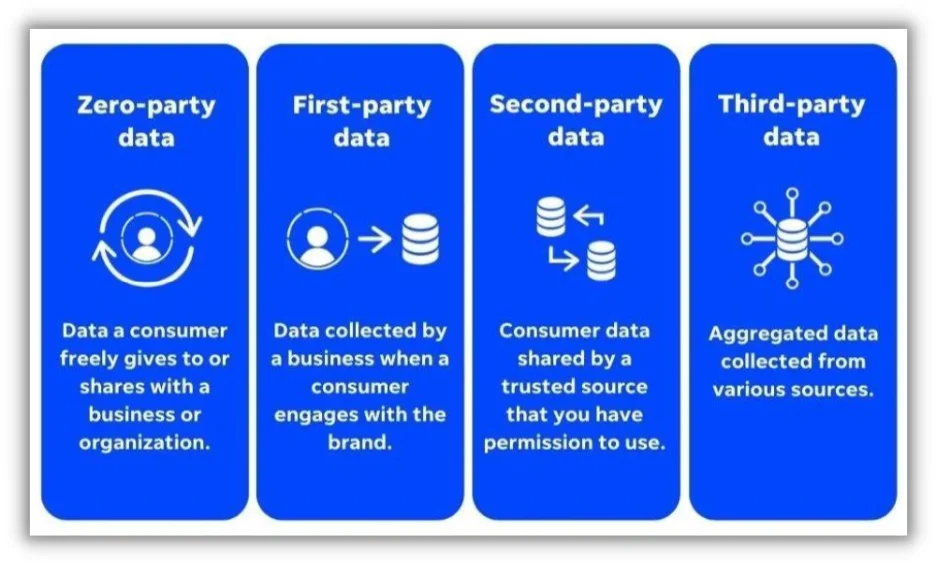
Zero- and first-party data are the best types of data collection sources to use when sourcing customer data. Why? Because they are the most transparent, least likely to infringe on privacy policies, and lead to more engaged customers and campaigns. Second- and third-party data are still helpful to inform your marketing strategies and help boost the effectiveness of other campaigns.
Types of customer data
There are four main types of customer data that you can collect—and they can help your business’s marketing efforts in different ways.
Basic data
Basic data is pretty self-explanatory. It’s the basic information about your customers, including their:
- Name
- Email address
- Phone number
- Address
- Gender
- Income
- Industry
- And more
This is essentially demographic data. Basic data is fairly easy to collect as many people are used to providing their names, email addresses, phone numbers, and addresses when placing an online order, downloading a piece of content, or signing up for a newsletter.
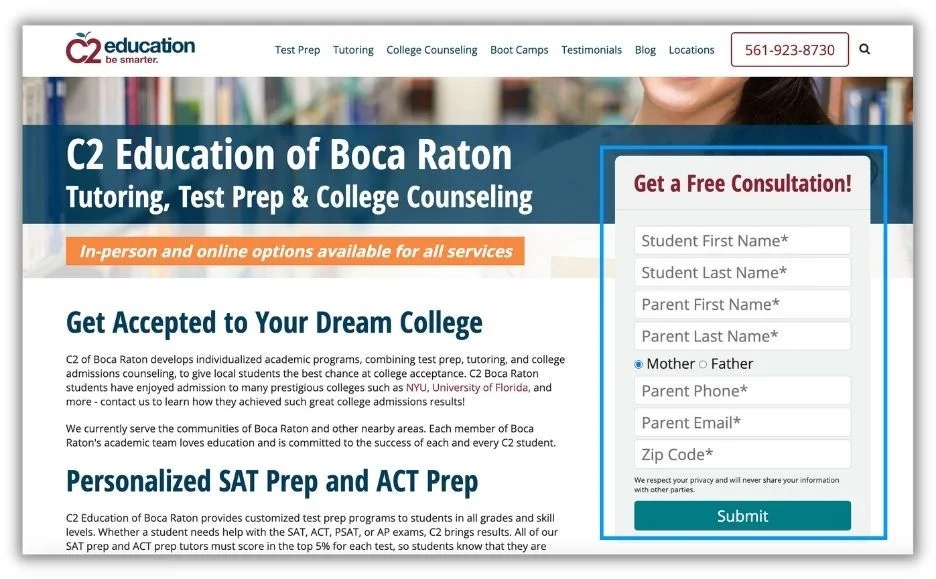

This information can provide the basis for your campaign targeting, can help you assess which marketing channels to use, and can inform several marketing strategies.
📚 Free guide download >> 135 of the Best Words & Phrases for Marketing with Emotion
Engagement data
Engagement data is information about how your customers engage with your business across various touchpoints. This could include their engagement with your social media sites, how they click through your website, or whether or not they click on your search ad.
Typically, businesses collect this data at a higher level rather than an individual level. Although some tools can help you see this information at a user level.


An example of engagement data for a business’s Facebook page.
This customer data can be used to assess the effectiveness of your marketing efforts, identify specific campaigns or messages that are resonating with your brand, and inform areas for improvement in your marketing strategy.
Attitudinal data
Attitudinal data is information about how customers feel about your business and your products or services. This customer data is extremely useful but is more difficult to collect.
Because this type of data comes straight from your customers, it’s usually collected as a survey or review.
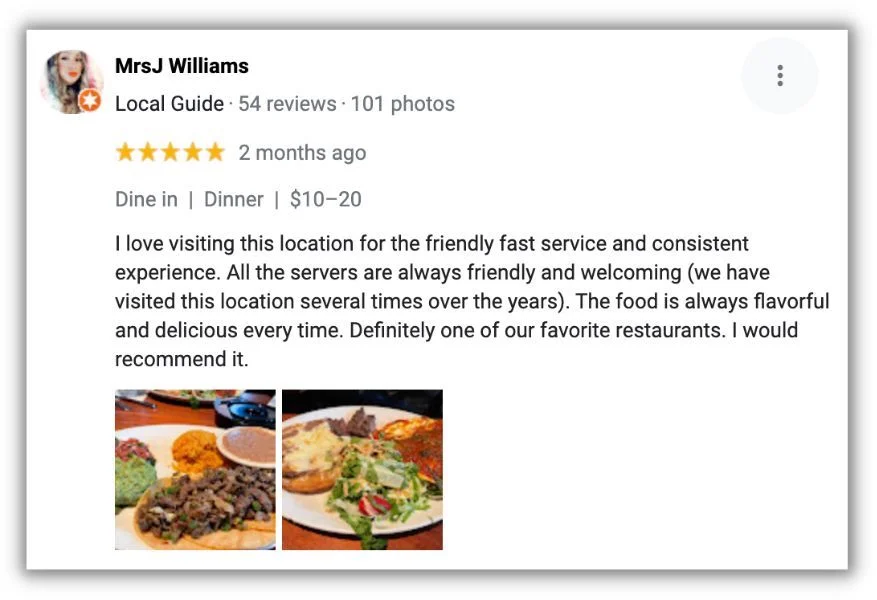

Attitudinal data can help you improve your marketing campaigns, your products and services, and your overall business operations.
Behavioral data
Behavioral data is information about how customers engage directly with your products or services. This includes past purchases, appointments scheduled, items added to a cart, and more.
This information can be collected through a variety of sources, such as a lead management platform, a POS system, and more.
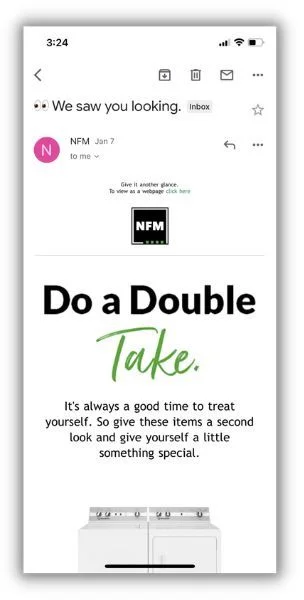

Behavioral data can impact your nurture campaigns, promotions, and more.
How to collect customer data
There are many different ways to collect customer data without infringing on your customers’ rights or violating their privacy. We’re going to focus on some zero- and first-party customer data collection methods.
Here are some options for collecting customer data.
1. Build an email list
Building an email list is one of the best ways to collect customer data. You can build an email list in many different ways, including:
- Having people sign up for your newsletter
- Adding a contact form to your website
- Adding a contact form to your landing pages
- Creating a quiz where customers get their results in exchange for an email address
- And a few other options we’ll talk about shortly
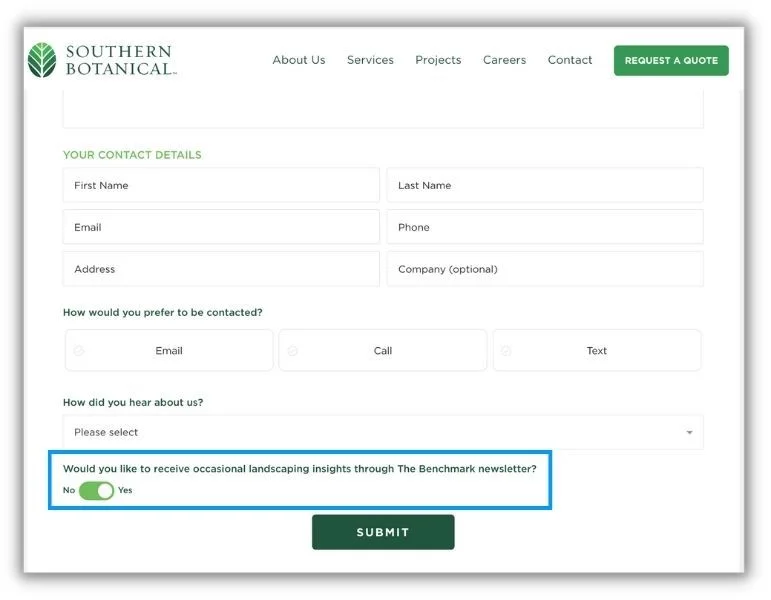

Building an email list will help you collect basic and engagement data and set the stage to help you collect additional data through some of our other ideas.
🛠️ Get the tools and tips you need to build the perfect landing page in our free guide >> How to Make Great Landing Pages (with Crazy-High Conversion)
2. Send a survey
One of the best ways to learn more about your customers and prospects is to ask them! You can do this through surveys, which can be sent via email, added as a link on your website, or included as a link on your invoicing or receipts.
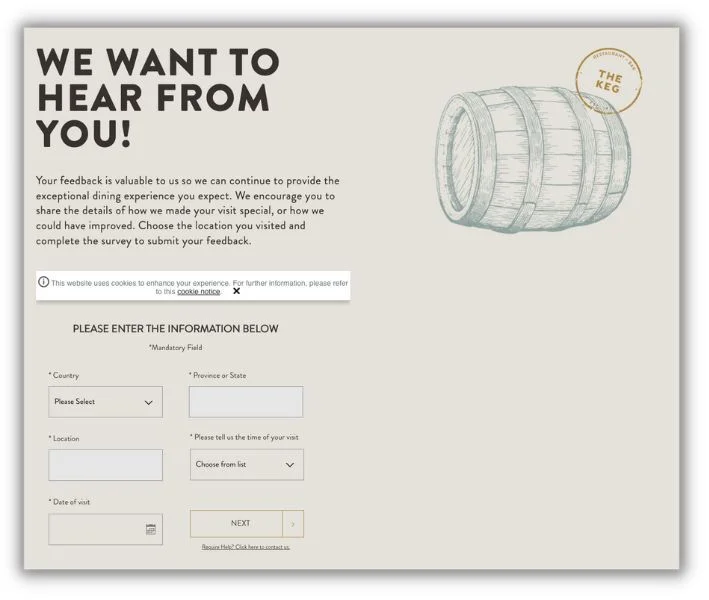

The questions in your survey will depend on the type of customer data you’re hoping to collect.
For example, if you want to collect basic data, your survey will likely read more like a lead collection form that includes spaces for your customer’s name, phone, number address, and occupation.
If you want to collect the ever-elusive attitudinal data, your survey will focus more on how customers perceive your business, your products, and your services.
You can also survey your customers to find out information that may influence behavioral data, such as what social media sites they’re active on, where they’ve seen your business online, and what types of content they’re interested in seeing from your business.
3. Run a contest
Whether you’re looking to build your email list or see a change in engagement data, running a contest is a great customer data collection method.
In exchange for the valuable information you’re collecting from your customers, you’ll want to make sure the prize is compelling and that you promote your contest on the channels your customers are most likely to engage—probably social media, through email, and on your website.


4. Use a lead management system
One of the best ways to collect customer data and learn more about your customers is by using a lead management system. A lead management system tracks where your leads are coming from, how they’ve engaged with your business online, and their behavior with your products or services.
A lead management system that uses a single lead inbox can also aggregate your customer data and help you identify interesting trends that can impact your overall marketing strategy and how you spend your budget.
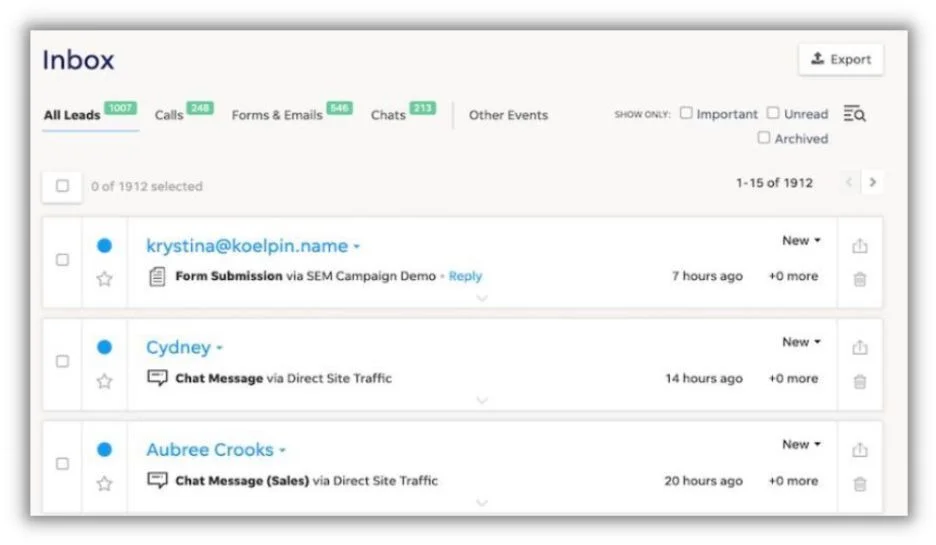

This data customer collection method can also help you learn more about your specific customers’ journey—including how many touchpoints it takes a lead to convert or what marketing channels convert at the highest rate.
5. Offer a free downloadable resource
Another great way to build your email list and collect customer data is to provide a free downloadable resource that relates to your business.
While this is a popular tactic in the B2B world, it can also work really well for B2C businesses. For example, a cleaning business can provide a downloadable spring cleaning checklist or a dentist can provide a downloadable guide on the foods to avoid for healthy teeth.
The goal is to make your resource compelling enough for a prospect or customer to provide their information in exchange for what you’re offering.
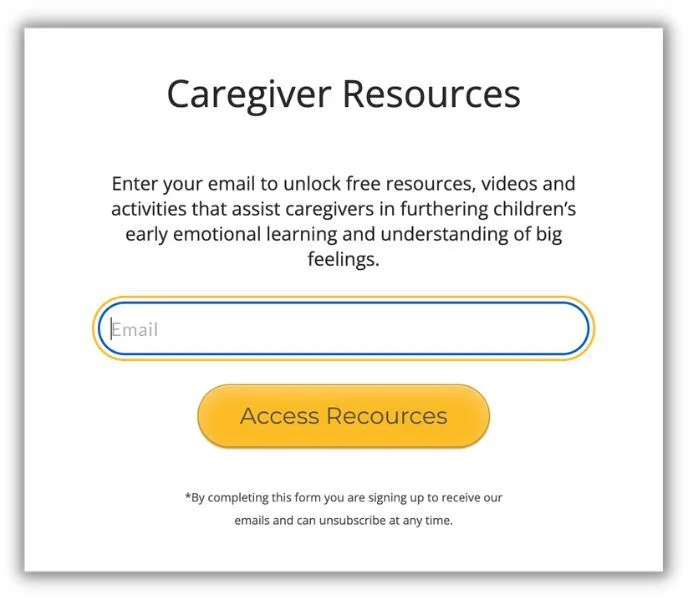

By offering multiple downloadable resources, you can also collect customer data about the topics that drive the most downloads and tailor your content creation or campaigns to those topics or messages.
How to use customer data for marketing
We’ve touched a little on how the types of customer data can impact your marketing, but let’s dive a little deeper now that you have some ideas on how to collect it.
Identify the right marketing channels
When you understand more about your customers, including their demographic information and where they spend time online, you can choose the right marketing channels that will make the biggest impact on your business.
For example, if you know that most of your customers are Gen Zers, then you can assume that TikTok, Snapchat, and Instagram will be big drivers for your business.
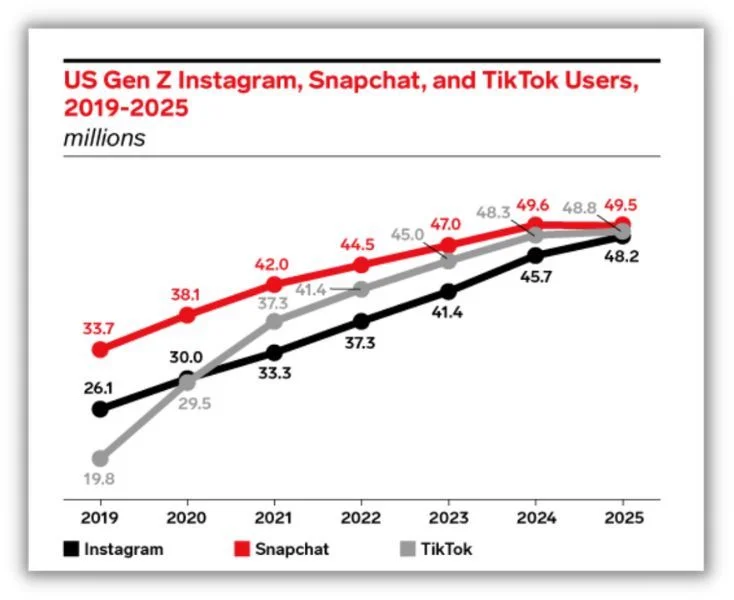

Or, if through a survey, you find that most of your current customers found your business on Google, then you might consider focusing more of your marketing efforts on search ads and SEO so you can capture more customers there.
Through collecting customer data, you may also identify some new channels that you hadn’t considered—which can help you test new strategies and make your marketing even more effective.
Refine marketing messages
When you understand how your customers engage with your business, what drives them to make a purchase with you, and their top pain points, you can better refine your marketing messages. This helps you personalize your marketing strategy to your most likely customers, which can drive better results.
For example, after sending a survey to your plumbing customers, you may have found that most of them value your quick response time to emergency jobs. You can then use this information in your ad copy, on your website, and in your social media posts to influence potential new customers to give you a call or think of you when they have an emergency.


Optimize campaigns
Better understanding your target market through customer data is extremely helpful for optimizing your campaigns and overall marketing strategy.
And even the most basic data about your customers can help. For example, location data makes up the foundation of many paid advertising campaigns, so by understanding that most of your customers are in a specific suburb, you can optimize your ad targeting to reach them.
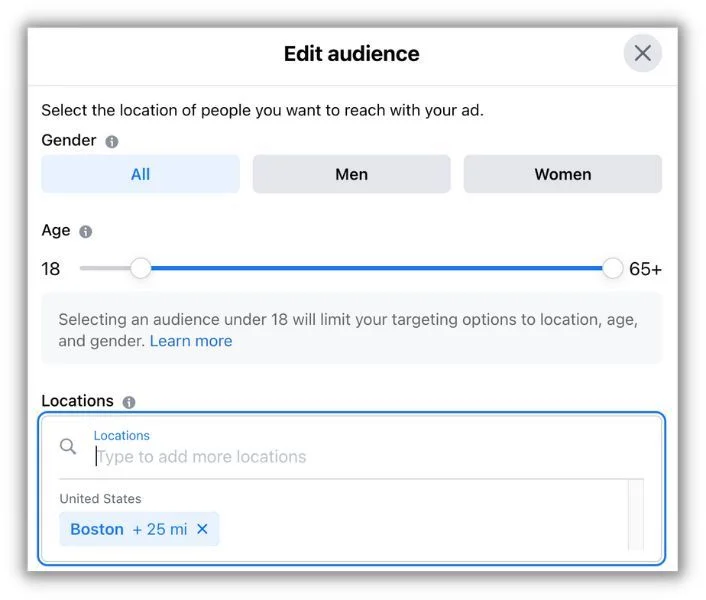

You can also optimize your ad copy using feedback from your refined marketing messages and identify specific searches that drove customers to your website or to click on your ad.
🎯 Need targeting help? Get the guide >> 10 Facebook Ad Targeting Strategies That Work In a Privacy-First World
Personalize your marketing
Personalization is no longer a “nice to have” when it comes to effective marketing. It’s a necessity. And you can’t personalize your marketing without access to customer data.
Customer data can help you segment your audiences, which leads to better-targeted ad campaigns or email marketing messages.
For example, within your lead management system, you could tag customers who previously purchased your teeth whitening package and then send them emails about teeth whitening specials or content on how to keep your teeth clean, since this is likely a topic they’re interested in. These targeted messages can help customers feel like they’re getting a personalized experience and lead them to take action.
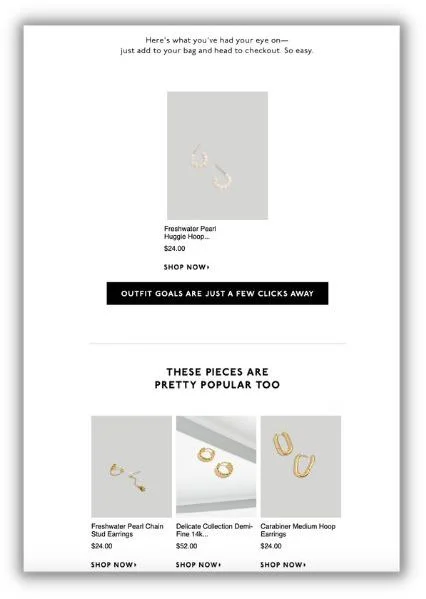

Customer data can also help influence the type of content you create, which helps create a more personalized experience for your customers. This content can be distributed across social media, your website, your newsletter, and more, which leads to more engagement on your marketing channels.
Influence nurture sequences
When you collect customer data that helps you understand your buyer’s journey, you can create nurture sequences meant to increase conversions.
Email nurturing is when you send a series of emails meant to drive prospects through the sales funnel until they convert into a customer.
By collecting customer data about how your customers engage with your business throughout the funnel, you can optimize your nurture sequences to identify the right path for segments of potential customers.
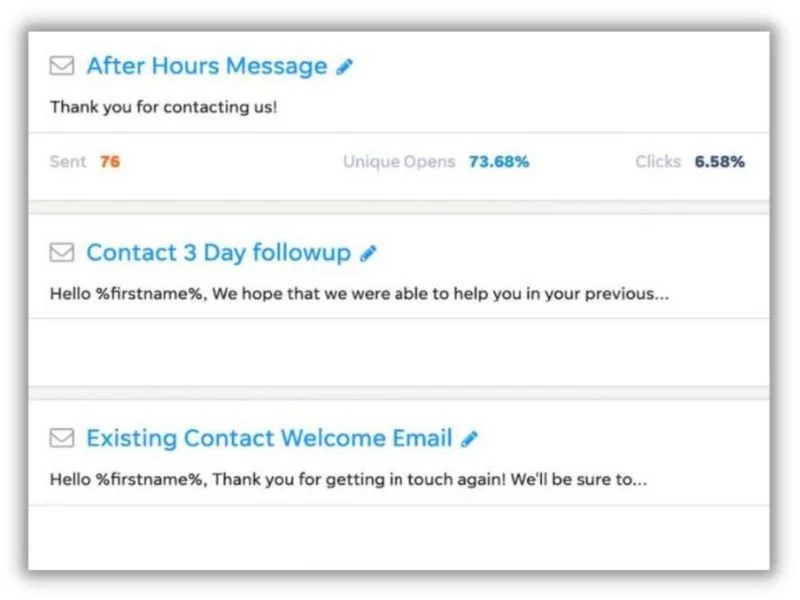

For example, say you’re an SAT prep center. You might find that an email with tips for helping your child study for the SATs followed by an email from a parent and student testimonial who received stellar scores after preparing with your SAT prep center drove a high volume of calls or classes scheduled. That would then be a compelling nurture sequence to continue testing for better results.
Tips for ethical customer data collection and storage
We can’t end this post without touching on some important tips for collecting and storing customer data.
- Include unsubscribe buttons: Every email you send to your email list should include an unsubscribe button so people can opt out at any time.
- Create a privacy policy—and publish it on your website: A privacy policy that outlines how you collect, use, and store customer data is essential. Make sure to publish it on your website and include it any time customers are providing their data or opting into your email list.
- Protect customer data: Any business that collects customer data is at risk for a security breach. Take extra steps to protect your customers and their data.
- Be transparent: Communicate with your customers or prospects if a breach happens, if you update your privacy policy, or if there’s any threat to their data.
- Try a double opt-in: A double opt-in is becoming more standard as it ensures customers know what information they’re providing to businesses. It can also lead to a more engaged email list!
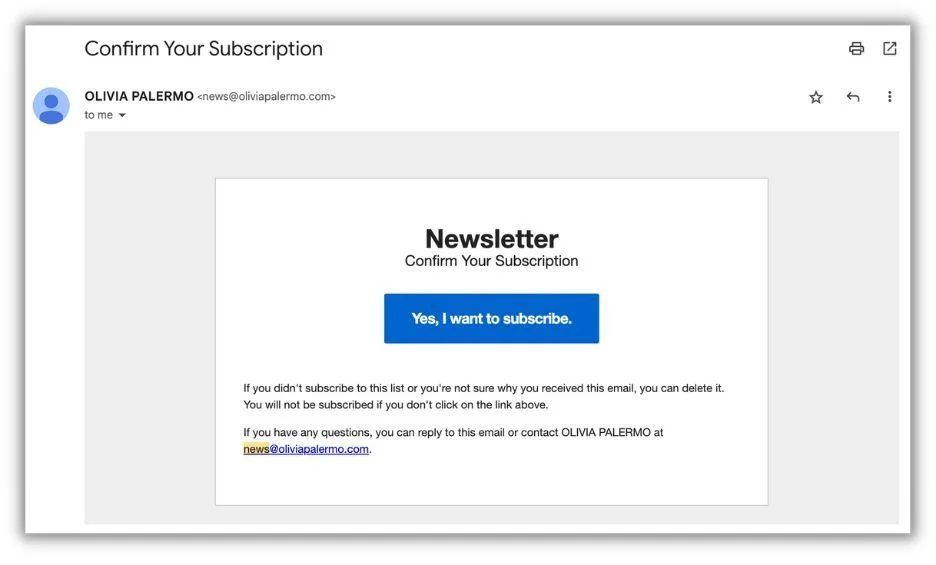

Example of a double opt-in email.
Collect and use customer data the right way
Collecting and using customer data can be tricky—if you don’t do it right. By using these zero- and first-party collection methods, you can get access to valuable customer data without infringing on your customers’ rights or making customers feel uncomfortable.
As second- and third-party data collection become murkier, these methods will help you find customer data and use it right.
PPC
4 New Google Ads Performance Max Updates: What You Need to Know

Ever since the launch of Performance Max (also sometimes called PMax) campaigns in 2021, Google has continuously doubled and tripled down on the new campaign type. Originally, most tools were focused on making it easy to “upgrade” your existing campaigns to PMax, whether it be Shopping, Dynamic Search Ads, or Display.
In recent months, there have continued to be countless updates to the Performance Max campaign ecosystem, but in my mind, they almost exclusively focus on two main areas: creative assets and targeting controls. In this post, I want to walk you through a few of the updates (although certainly not an exhaustive list) that have come out recently and what these trends mean overall for your Performance Max campaigns.
Contents
Updates to Performance Max creative assets
We all know our creatives are the first impression (sometimes literally) our brands can have on our customers. With Performance Max campaigns running across all Google-owned properties, there’s a very wide range of possibilities of what your ads could look like depending on what you provide. It’s becoming more clear that Google is not going to settle for subpar creatives. Here are a couple of updates (announced in the same post) they’ve rolled out recently that lean into this idea.
🚨 Get an instant read on your Google Ads Performance Max campaigns with our free Google Ads Grader!
1. Ad strength now impacted by creative count and diversity
From the beginning with Performance Max ads, you were able to provide multiple different images, videos, and other text assets to support your creatives. The performance you saw would rely a good amount on how good those assets were.

But in early 2024, as you can see above, Google announced that now the number and diversity of those assets will have an impact on your ad strength. While I don’t believe you should use ad strength as a KPI for your company, you need to pay attention to it since these are the factors Google now finds important.
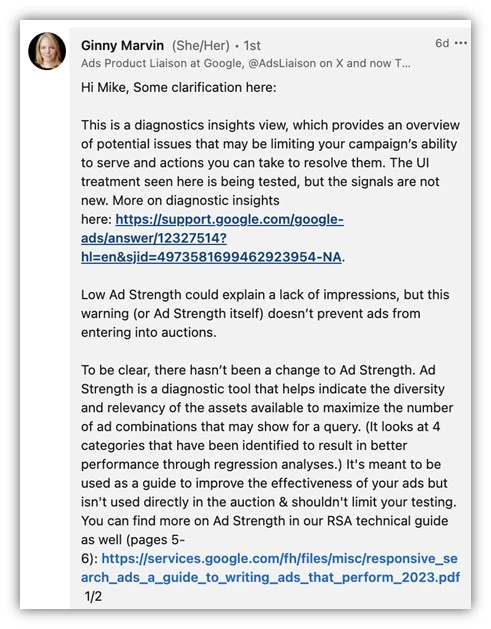

It’s also incredibly important for me to note that this does not impact the competitiveness of your Performance Max Asset Groups. The goal of these changes is to improve the diagnostics tool view for Google and help you optimize your ads. Ginny Marvin, Google Ads Liaison, clarified by saying that the components of ad strength had not changed and that low ad strength could be a reason why you’re not getting impressions but won’t prevent you from entering the auction.
If you’re up against another advertiser in the auction though (if I’m understanding correctly), all other things being equal, they may win that auction over you if they have a better ad strength with better diversity of their creatives than you do. So if you were relying on a barebones creative strategy up until now, it might be in your best interest to invest more in that space now and start to stand out from the competition and get your ad strength up.
If you’re interested in knowing all the asset formats you can use for Performance Max campaigns, here’s the best resource from Google I’ve found that outlines what you can use for your assets and the specs surrounding each.
2. New asset creation options are coming to help
Google’s not leaving anyone out of this update. It’s well known that creatives are one of the biggest hurdles for many brands, so with the announcement around ad strength, they also announced a few new updates that are here (or will be coming) to Performance Max asset creation. These tools will help with better text and image assets so you don’t have to rely on your creative teams as much as before.


First, there’s Gemini, Google’s largest and most capable AI model to support text generation for long headlines and sitelinks.


Second, Imagen 2, Google’s most advanced text-to-image technology will be used to help advertisers create lifestyle imagery using just a few simple prompts.
Both of these tools will make it incredibly easy for advertisers to extend the number of assets used in Performance Max without needing to ping a designer. Plus, the tools will still provide the ability to review all assets before they’re turned live to ensure brand safety and suitability.
Lastly, Google’s making it easier to incorporate outside sources into the creative asset mix. They’re growing their partnership with Canva with an integration app that will allow you to publish assets from Canva directly to your Performance Max assets. Additionally, they plan to roll out a preview option for anyone on your team, regardless of Google account status, so they can review creatives and collaborate.
All of these updates together make it very clear that Google’s is prioritizing the user experience and they want to make sure all advertisers have their best creative foot forward.
💡 For more ideas to improve your Google Ads strategy, check out our free guide on hacking Google Ads!
Performance Max targeting updates
When Performance Max campaigns were originally rolled out, all targeting was built in. Google Ads Performance Max targeting was basically a black box. We knew the ads would run on all Google-owned properties, but any further insight than that was pretty much non-existent, let alone any options to control what those targets would be. But in recent months, Google has softened that stance and is now providing more insights and controls on where your ads show. Not all of these updates are from the most recent announcements, but they’re all important for advertisers to know about so you can get the best performance from your PMax campaigns.
3. Brand exclusion lists
A huge problem with the Search component of Performance Max campaigns is that it would regularly spend a large portion of its budget on brand terms. This could cause problems in a couple of ways: stealing traffic from existing branded campaigns or bidding on brand terms for companies who didn’t want to bid on those terms.
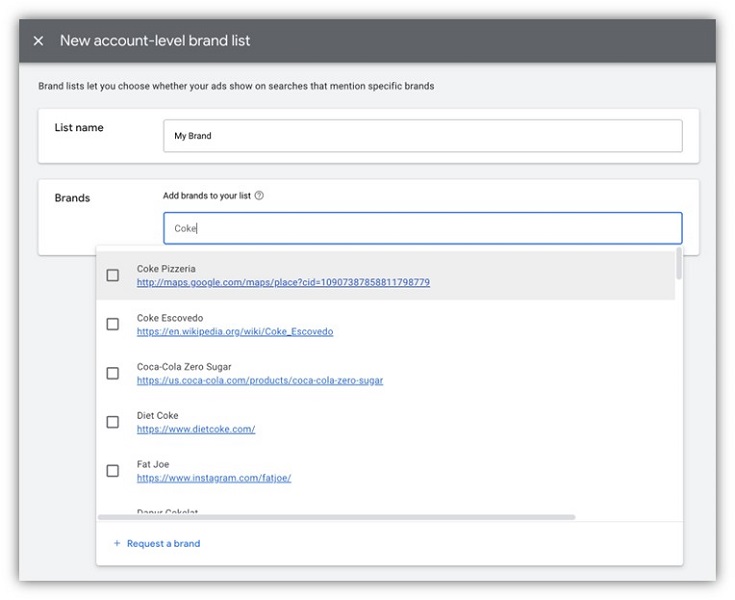

With the rollout of brand exclusion lists, advertisers can effectively stop that Brand bidding and return to non-brand prospecting through PMAX. They’re extremely easy to set up at the account level and can be customized to include sub-brands too.
4. Ability to exclude sites from Performance Max (now including search partners!)
In addition to brand keywords, Google made it possible to exclude display placements from Performance Max campaigns if you leverage account-level placement exclusion lists. This was an amazing update that made it much easier to control the performance of Performance Max campaigns.
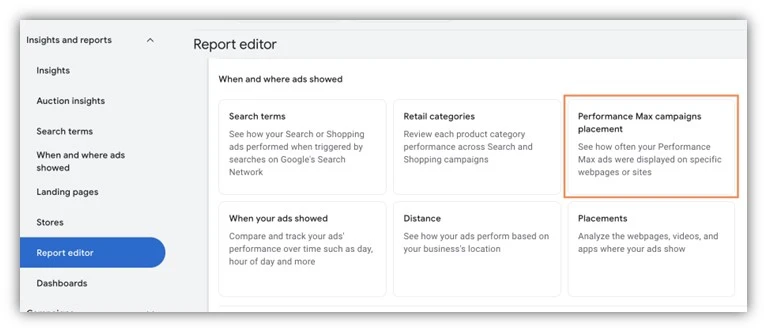

If you weren’t sure which placements you should add, Google created a report where you can see the impression counts for your campaigns on each individual site. It’s not perfect since we don’t see actual conversions, but it did provide some transparency.


In March of 2024, things just got even better. In this help article showing how to create those placement reports, Google said it will now include search partner sites alongside the display placements for Performance Max.
Additionally, when you add a search partner site as an exclusion at the account level, it will now apply to ALL campaigns in your account, Performance Max and Search campaigns alike.
At the same time, Google has removed the ability to opt out of the Search Partner Network altogether for Performance Max campaigns, a change originally meant to be temporary and address the backlash they got from an Adalytics report saying the content wasn’t suitable.
What these Google Ads Performance Max updates mean for advertisers
Despite many updates over the last three years, it’s clear to me that Google’s current focus is on transparency & control of placements and the creative assets used for Performance Max. Whether you’re just getting started and want to start with some Performance Max best practices or if you’ve been running PMAX for a while and you’re trying to stay in the know, it’s important for you to pay attention to these two trends in PMAX and make sure you’re adjusting your campaigns as needed. For more insight into how to, well, maximize your Performance Max campaign performance, see how our solutions can help!
-

 WORDPRESS7 days ago
WORDPRESS7 days agoTurkish startup ikas attracts $20M for its e-commerce platform designed for small businesses
-

 MARKETING6 days ago
MARKETING6 days agoRoundel Media Studio: What to Expect From Target’s New Self-Service Platform
-

 SEO6 days ago
SEO6 days agoGoogle Limits News Links In California Over Proposed ‘Link Tax’ Law
-

 SEARCHENGINES7 days ago
SEARCHENGINES7 days agoGoogle Search Results Can Be Harmful & Dangerous In Some Cases
-
SEARCHENGINES6 days ago
Daily Search Forum Recap: April 12, 2024
-

 SEO5 days ago
SEO5 days ago10 Paid Search & PPC Planning Best Practices
-

 SEARCHENGINES5 days ago
SEARCHENGINES5 days agoGoogle Core Update Volatility, Helpful Content Update Gone, Dangerous Google Search Results & Google Ads Confusion
-

 SEO6 days ago
SEO6 days agoGoogle Unplugs “Notes on Search” Experiment









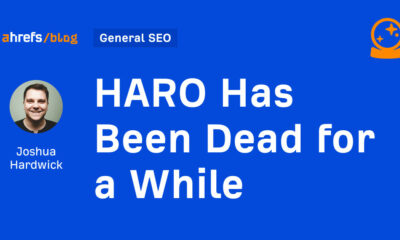



You must be logged in to post a comment Login